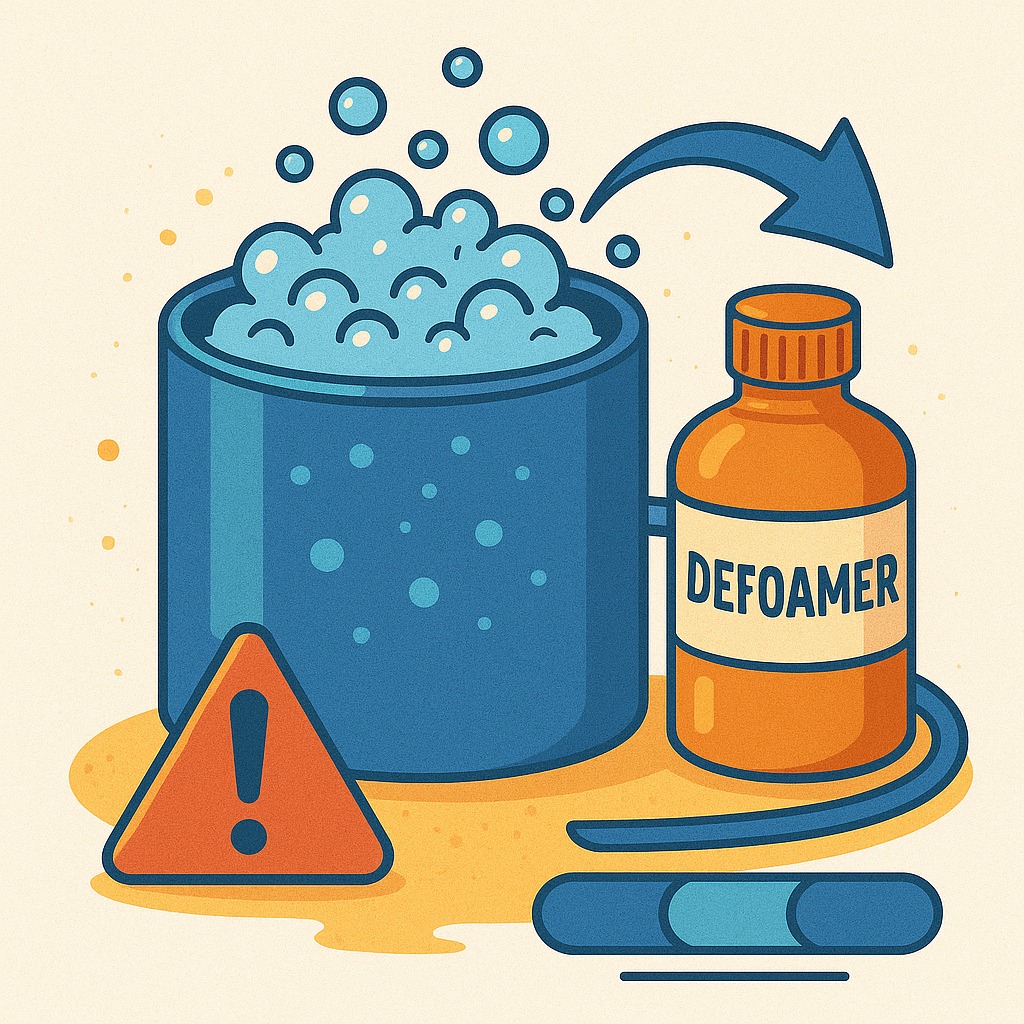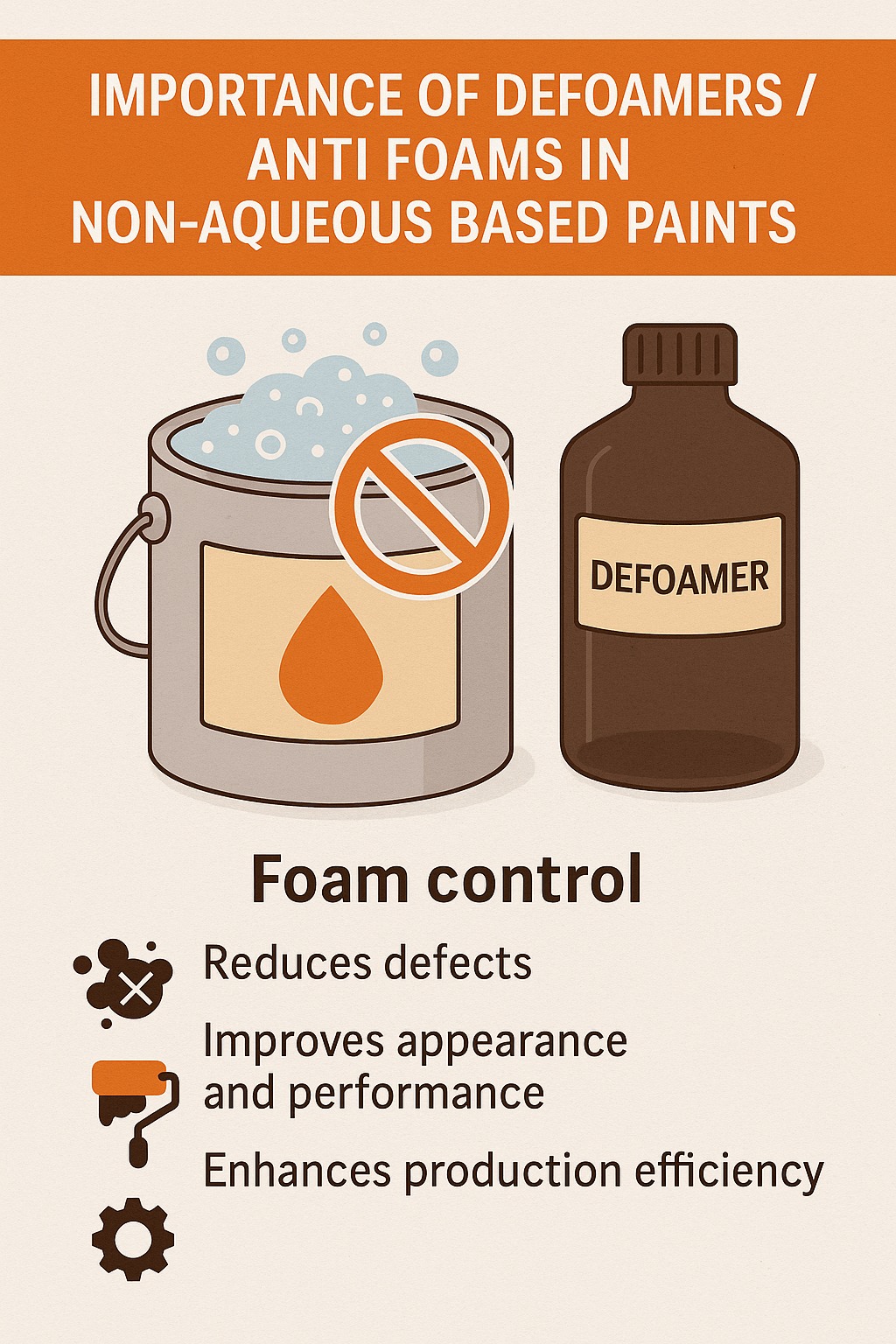
The Critical Role of Defoamers and Antifoams in Non-Aqueous Based Inks

In the world of printing, consistency, quality, and process efficiency are paramount. Non-aqueous based inks - such as solvent-based, UV-curable, and oil-based inks - are widely used in printing industries like packaging, textiles, and specialty graphics. However, one persistent enemy of quality and productivity in these systems is foam.
This is where defoamers and antifoams become indispensable.
Understanding the Foam Challenge in Non-Aqueous
Inks
Foam
is more than just a visual nuisance. In non-aqueous ink systems, foam formation
happens during:
- · High-speed mixing
- · Ink milling and dispersion
- · Pumping and transfer processes
- · Application on substrates during printing (especially in flexo, gravure, or screen printing)
Foam entrapment leads to serious problems:
- · Ink flow issues
- · Reduced color strength and print density
- · Poor substrate wetting
- · Defects like pinholes, craters, and surface
irregularities
- · Inconsistent gloss and finish
- · Higher rejection rates and customer complaints
Why Foam Forms More Easily in Non-Aqueous
Systems
Non-aqueous
inks often contain:
- · Organic solvents
- · High-molecular-weight resins
- · Surface-active agents (like dispersants and wetting agents)
These ingredients reduce surface tension and stabilize foam, making it harder to break during manufacturing and application.
Additionally, unlike aqueous systems, non-aqueous inks have lower polarity and limited water content, making foam collapse mechanisms different and more difficult.
Role of Defoamers and Antifoams: Breaking
and Preventing Foam
What
Are Defoamers and Antifoams?
Defoamers:
Products that break existing foam during ink mixing or application
Antifoams: Products that prevent foam from forming in the first place
Both play a critical role in non-aqueous ink manufacturing and end-use performance.
How Do They Work?
In
non-aqueous systems, defoamers work primarily by:
- · Spreading Rapidly on Foam Lamellae: Causing the
thin liquid film of the foam bubble to rupture
- · Lowering Surface Viscosity: Making the foam
less stable
- · Promoting Drainage: Accelerating collapse of
foam structures
- · Inhibiting Foam Stabilizers: Such as surfactants and resins
Common chemistries for non-aqueous
defoamers include:
- · Mineral oil-based defoamers
- · Silicone-based defoamers (modified for solvent
compatibility)
- · Polymer-based antifoam agents
- · Waxy defoamers (for UV inks)
Benefits of Using Defoamers in Non-Aqueous
Inks
|
Benefit |
Impact |
|
Reduced
Ink Foaming |
Smoother
production and application |
|
Better
Color Consistency |
Improved
pigment dispersion and print density |
|
Fewer
Surface Defects |
Minimizes
craters, pinholes, and fisheyes |
|
Enhanced
Wetting |
Better
substrate coverage |
|
Improved
Print Quality |
Gloss,
flow, and leveling consistency |
|
Increased
Equipment Efficiency |
Reduces
downtime from foam-related issues |
Application Points for Defoamers in Ink
Production
- · Pigment grinding / milling stage
- · Let-down stage (when resins, solvents, and
additives are combined)
- · Post-production (before filling or packaging)
- · On-press during printing (especially in screen or flexo printing)
Selecting the right defoamer for the ink chemistry, solvent type, and application process is crucial.
Key Considerations While Choosing a
Defoamer for Non-Aqueous Inks
- · Solvent compatibility: Should not destabilize
ink or affect viscosity
- · Pigment wetting impact: Should not interfere with
color strength or dispersion
- · Long-term storage stability: Should not cause
sedimentation, haze, or separation
- · Low dosage efficiency: To minimize cost and
performance side-effects
- · Print compatibility: Should not cause surface defects or gloss reduction
Current Trends in Defoamer Technology for Ink
- · Silicone-free formulations (especially for sensitive ink systems)
- · Low-VOC and eco-friendly options
- · High-efficiency polymeric defoamers with minimal side effects
- · Defoamers with dual-functionality (such as anti-settling defoaming)
At Harmony Group, we recognize that foam control in non-aqueous inks is not a luxury - it’s a necessity for achieving consistent quality and trouble-free printing performance. The right choice and dosage of defoamers or anti-foams can help ink manufacturers and printers avoid costly defects, customer complaints, and production inefficiencies.
With
Harmony’s expertise in additive technology, we help formulators enhance process
reliability, ensure smoother manufacturing, and deliver superior print results
across diverse ink systems.



-in-aqueous-based-paints.jpeg)